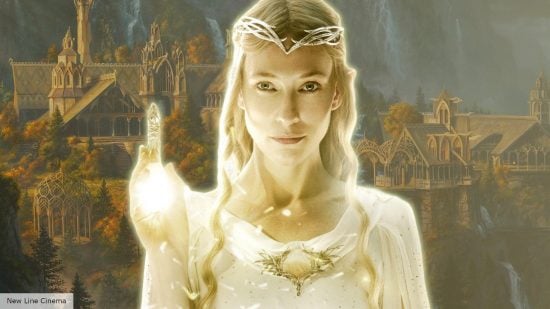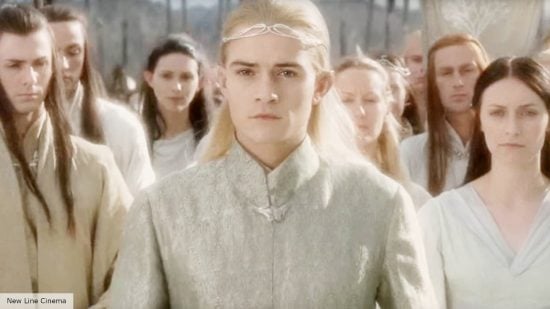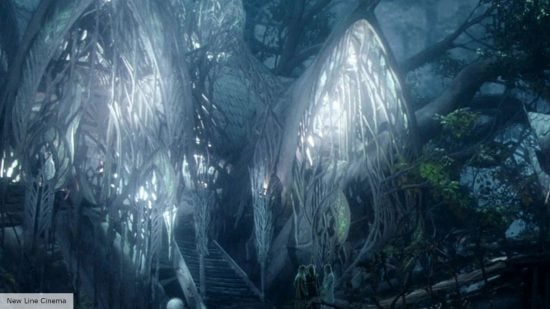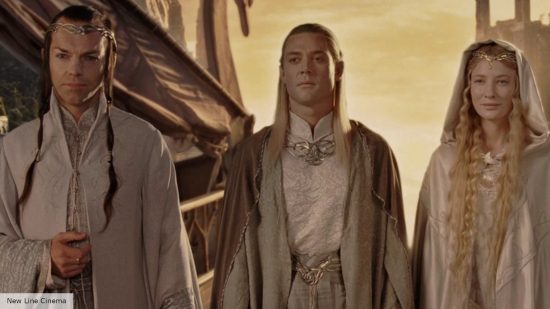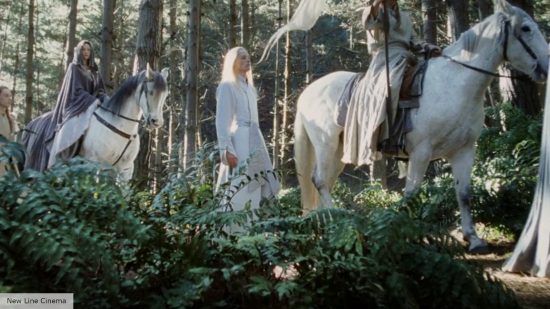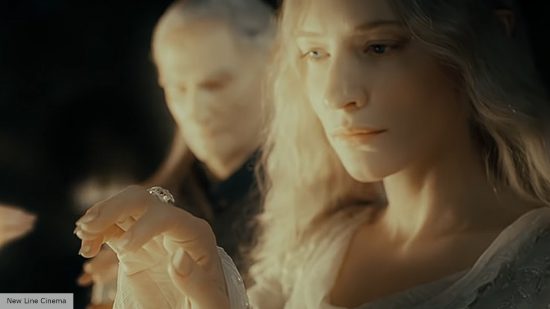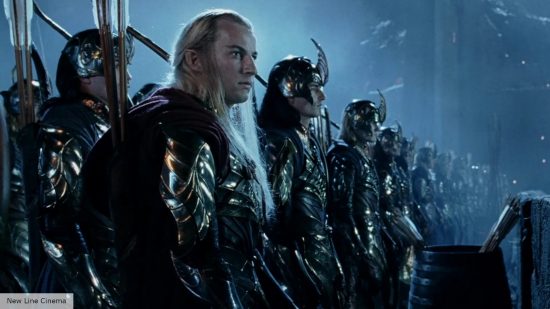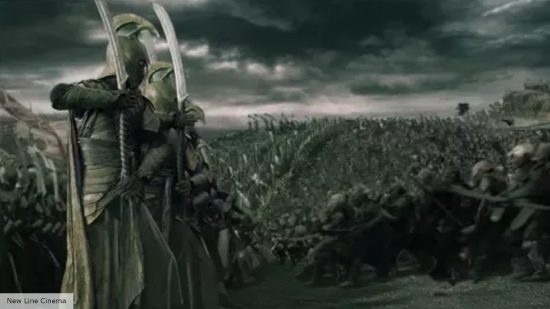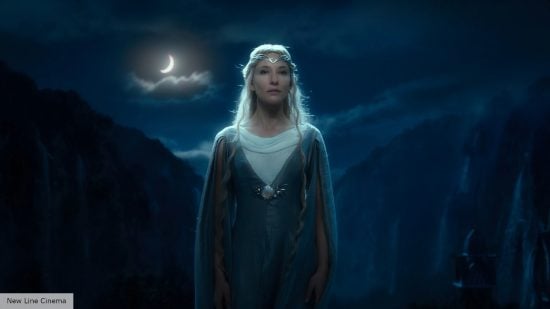Who are the Lord of the Rings elves? When it comes to Tolkien’s work, few races are as mysterious or as ancient as the elves. They’ve been around for centuries, capturing the attention of hobbits and demi-gods alike. But don’t let their elegant appearance fool you. Out of all the creatures of Middle-earth, it’s these fair folks who have the most bloody history.
If you have only seen the Lord of the Rings movies, you may not know how exciting the elves really are. Not only do they make up some of the best Lord of the Rings characters (shout out to Galadriel), but they have an epic backstory that’s never seen on the big screen. So, we’re going to give them the spotlight they deserve. Here is our guide breaking down everything you need to know about the elves in Tolkien’s world.
What are Lord of the Rings elves?
Elves are a race spread across Middle-earth and Valinor. They are typically remembered for their otherworldly beauty and immortality. However, throughout Tolkien’s story, we also see that they are experts in war and can be corrupted by power just like humans.
Elves were directly created by the one god in Tolkien’s world, Ilúvatar. They were the first race born from this grand creator and first awoke in Middle-earth beside the lake of Cuiviénen. Being the first race around, it was the elves who also officially “made speech,” and it was also the elves who first had to deal with the evil of Morgoth. Basically, these pointy-eared folks shaped the world long before Sauron made Mordor his home.
If you watch all the Lord of the Rings movies in order, elves are typically secondary characters, though. Elves like Elrond and Legolas help Frodo’s main quest but aren’t massive players in the grand scheme of all the Lord of the Rings films. This is because the elves’ true peak of contributions to Middle-earth history happened during the Years of the Trees and the First Age – long before Frodo encountered the One Ring.
All the types of Lord of the Rings elves explained
Over the course of Middle-earth history, we have seen the first elves (known as the Quendi) continually divided into various different tribes. But, although there were plenty of sub-factions within each main clan, there are really three main types of elves that every Tolkien fan should know about: the Vanyar, the Noldor, and the Teleri.
Before we deep dive into these three Lord of the Rings elf types, though, we need to explain some of the creatures’ history. Elves first “awoke” in the far-east of Middle-earth around 1050 of the Years of the Trees. Although there were separate clans during these early years, the elves lived together and didn’t have that many differences until an event known as the First Sundering happened.
The First Sundering led to the first real division in the elven race and caused two specific types of elves to form. Basically, what happened is that the Valar invited the elves to journey to Valinor. However, not every elf wanted to go to the Undying Lands. Those who refused the Valar’s offer and stayed in Middle-earth instead became known as the Avari (the Unwilling).
Tolkien doesn’t really write about the Avari, though. All we know is that those who didn’t venture to Valinor eventually became known as Moriquendi (aka the Elves of Darkness). Instead, the second group is what you need to focus on. The elves who traveled to Valinor were called the Eldar (People of the Stars).
These Eldar elves would go on to split into the three elf groups, the Vanyar, the Noldor, and the Teleri, and play the biggest part in the whole of Tolkien’s story. Still with us? Good. Now, let’s break down each clan.
- The Vanyar: These are the “Fair-elves” or “Light-elves” who stayed in Valinor and chose to leave Middle-earth behind for good, unlike the other two groups. They loved the light of the two trees and often sported some shiny golden hair and white banners. Although they are skilled at war, the Vanyar value wisdom and Valar culture over everything else.
- The Noldor: The Noldor are arguably the biggest troublemakers and most formidable when it comes to Lord of the Rings elves. They were known as “deep-elves” and were the craftsmen of the race. They are skilled in metalwork, and one of their kings (Fëanor) also made the famous Silmarils. The Noldor are also considered the greatest warriors in the elven race and usually have black hair. If a Noldor elf (like Galadriel) has golden hair, chances are they have Vanyar family somewhere.
- The Teleri: The largest elf clan and probably the most confusing since there are tons of mini-factions. Most of these Lord of the Rings elves actually stayed in Middle-earth due to the second and third sundering (more on that later). They typically have black or silver hair and are gifted in song and music. They loved the forest and the sea and were known as “singers” because of their fair voices.
That’s a brief overview of the main elf types, but there are still plenty of sub-factions from these three clans. Basically, not every Eldar elf made it to Valinor, and most of these were part of the Teleri elves. During the Second Sundering, some of the Teleri elves stayed in Greenwood (aka Mirkwood before it got all evil) and became known as Nandor (valley people).
Then, some of the Teleri stayed on the coast during the Third Sundering instead of heading to Valinor, becoming the Sindar (grey-elves). Later, these two groups mixed and became Laiguendie (green-elves).
And if you really want to get into it, some of the Nandor mixed with the Avari (remember them?), and we got wood-elves. The Teleri who actually made it to Valinor fell in love with the sea and became known as the Falmari (aka sea-elves).
The history of Lord of the Rings elves explained
After their awakening and all the Sunderings, there are three major events that define the history of the Lord of the Rings elves. These are the exile of the Noldor, the Battles of Beleriand, and the War of Wrath.
As many Tolkien fans already know, Sauron wasn’t actually the big bad in Tolkien’s world. Instead, his mentor Morgoth (aka Melkor) was the true villain, and he started to “turn the hearts” of the Noldor against the Valar. Melkor lied to the Noldor and said that the reason the Valar were keeping them around was because they didn’t want elves ruling Middle-earth. This led to eventual rebellion and a ton of trouble.
Things only got worse after Melkor fled to Middle-earth after destroying the Two Trees of Valinor and stealing the Silmarils (that the Noldor king, Fëanor, had crafted). Fëanor vowed to reclaim the jewels and made an oath to destroy anyone who got in his way. This oath had some dire consequences as it led to the Kinslaying at Alqualonde, where the Noldor killed Teleri elves to take their ships and follow Morgoth to Middle-earth.
This whole messy situation led the Valar to ban the rebels from Valinor. And, so the exiled Noldor headed to Middle-earth and ended up in Beleriand. From there, five great battles took place against Morgoth and the elves. These battles lasted for decades and nearly destroyed the Lord of the Rings elves, period.
Basically, elven princes died, Noldor strongholds were destroyed, and things looked bleak for all the elves of Middle-earth (not just the newly returned Noldor). But, luckily, the Valar believe in forgiveness. After the near destruction of their race in Middle-earth, the survivors from Morgoth’s attack were led by the elves by Gil-galad and Círdan.
One of the survivors was an elf named Eärendil, who ventured back to Valinor and asked for the Valar to pardon the rebels. After some good old-fashioned begging, the Valar agreed and sailed across to Middle-earth – officially kicking off the last stand against Morgoth (aka the War of Wrath).
With the help of the Valar, Morgoth was defeated. The elves were also offered the chance to return to Valinor. However, many decided to stay in Middle-earth and be led by Gil-galad instead. But, these elves didn’t find peace away from the Valar.
Sauron (aka Morgoth’s greatest servant) was still around, and he continually waged war on the remaining elves throughout the First and Second Age. Sauron also corrupted the elf Celebrimbor, the grandson of Fëanor, to make the Rings of Power.
Not only did they have to deal with Sauron and all his deception, but the elves also began to realize that Men were taking their place as the rulers of Middle-earth. So, as the centuries continued, more and more decided to accept the Valar’s invitation and head back to Valinor.

What happened to the elves after Lord of the Rings?
After Frodo threw the One Ring into Mount Doom and Sauron was defeated, the last of the elves left Middle-earth and sailed to Valinor during the Fourth Age.
The elves who did remain in Middle-earth after the hobbit saved the day also faded, with their spirits consuming their physical bodies. Tolkien also let us know that when the end of the world came, elves would have turned into beings called Lingerers.
Lingerers sound a lot like angels as they weren’t visible to mortal eyes and only appeared when they felt like it. But, unfortunately, we never found out what role these Lingerers really had.
Lord of the Rings elves’ powers and abilities explained
Besides immortality and beauty, elves have a number of powers and abilities that no other Middle-earth race could achieve.
In terms of physical powers, elves have superior senses. They can see further than most Men, are light of foot (meaning they can easily walk on snowy and other difficult terrain), and have great hearing too. Elves also don’t need to sleep, they can simply walk in a meditative state, and considering how they also don’t leave tracks, this makes them pretty much the most effective travelers in Middle-earth, period.
On the cultural side of things, Lord of the Rings elves were skilled craftsmen, able to achieve things that even dwarves struggled to replicate. Remember, it was the elves who made the Silmarils and Rings of Power. This ability to create also leads us to the point that some races in Middle-earth constantly reference “Elf Magic.”

Now let’s set things straight, “elf magic” isn’t really explained, and a lot of the time, the term was simply used to refer to elf-made objects that had special abilities (eg, the three rings of Power). But we have seen powerful elves seemingly having the ability to control nature and the elements, too. So, although there isn’t a clear-cut answer, elves do have some kind of magic or at least the ability to utilize it through tools.
For more Tolkien fun, check out our guides on the Lord of the Rings cast, and detailed explainers on Gandalf, Aragorn, and Gollum. We also have all the information you need on the Rings of Power season 2 release date and all the New Lord of the Rings movies heading our way.
But if you want a Middle-earth break, you can also check out our lists of the best movies, the best fantasy movies, and all the new movies coming up that you need to add to your watchlist.
